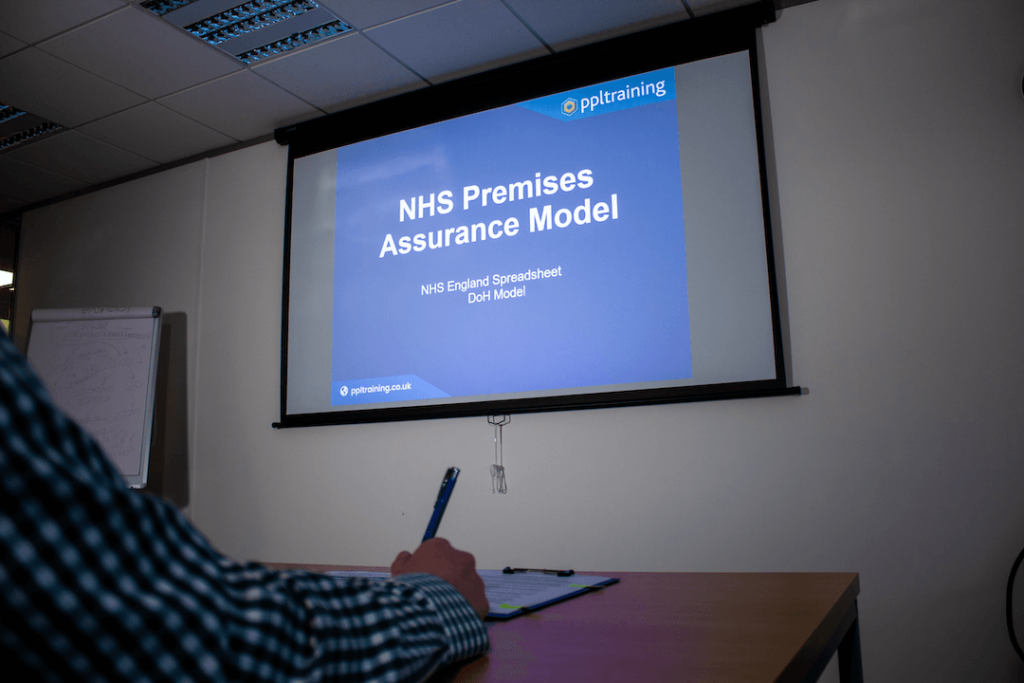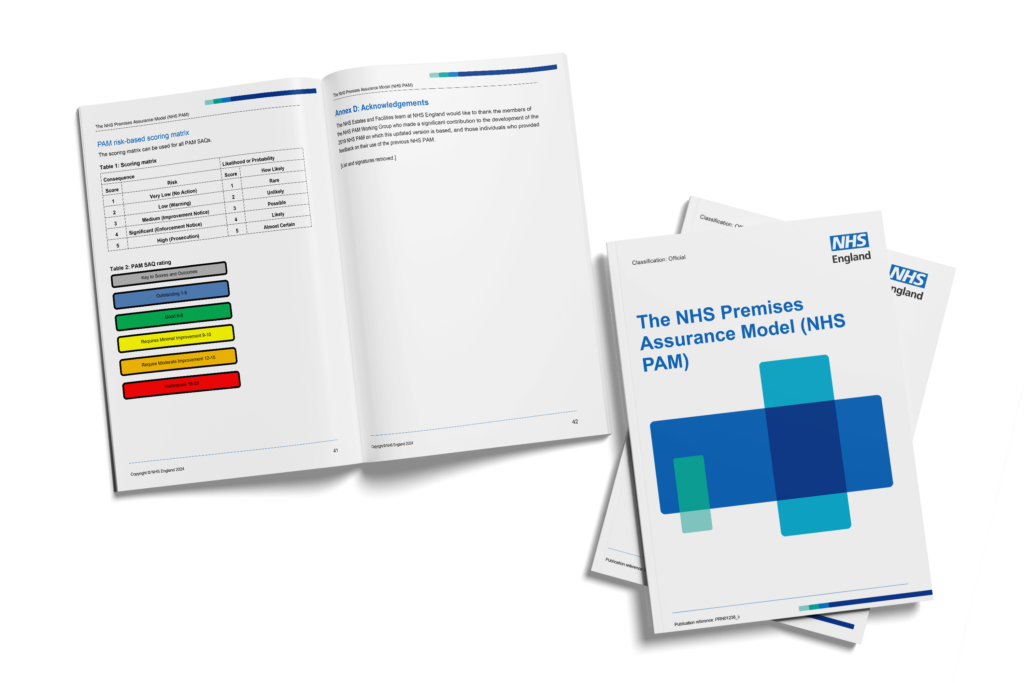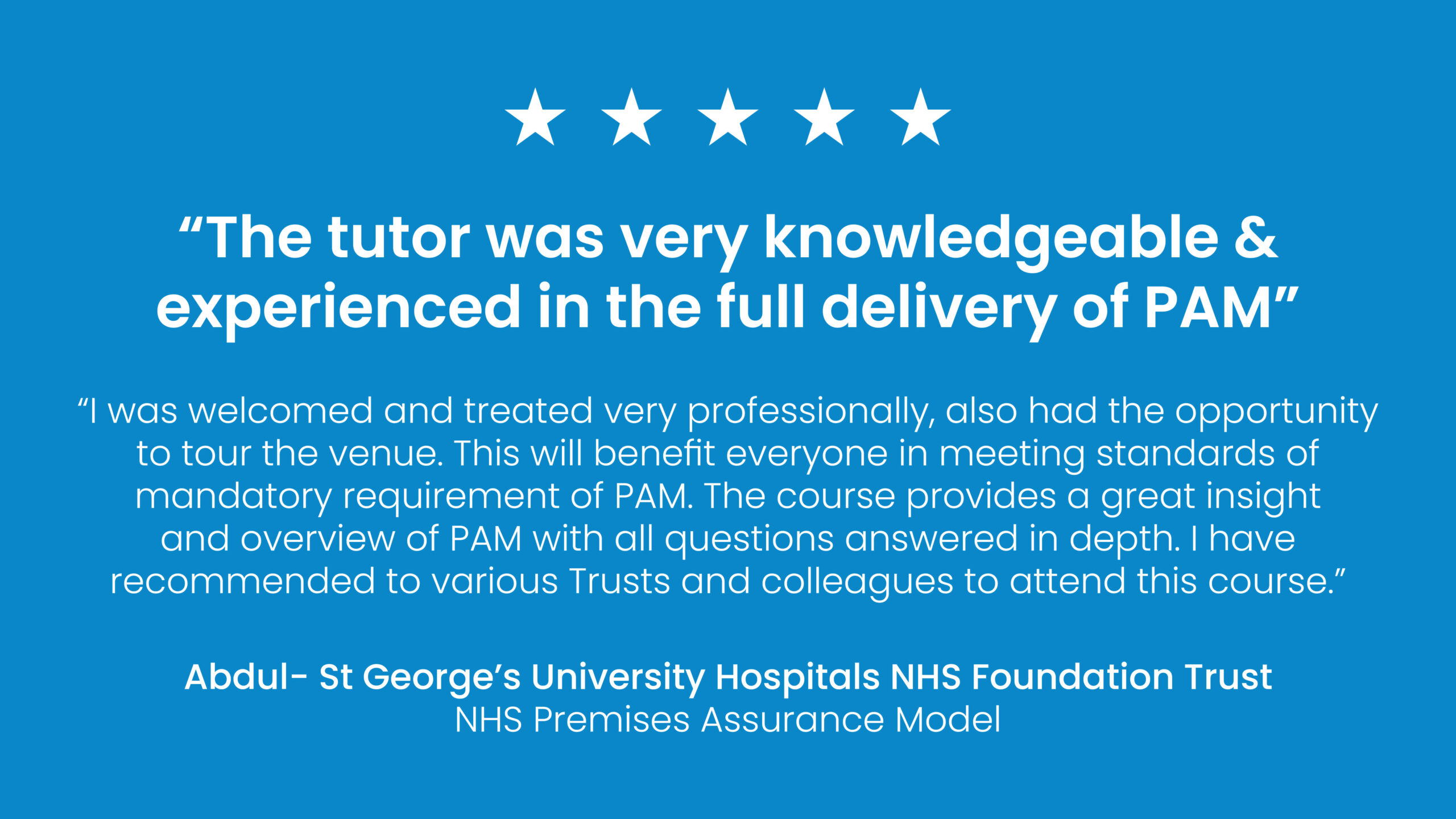courses in your basket.

Following communications from NHS England and NHS Procurement on 1st May 2024, NHS Estates and Facilities teams have been provided with a deadline for Premises Assurance Model submission.
Updated versions of the Self Assessment Questions (SAQs) were circulated, along with a new guidance document designed to aid in completion of the NHS PAM.
The submission window for this year's NHS PAM will close on Friday, 13th September 2024.
Excerpt taken from HEFMA Pulse Magazine - March/April 2024 issue. Interview conducted and written up by Editor - Amanda Roberts. Read in full here.
The introduction of the mandatory Premises Assurance Model (PAM) was a big step forward for the NHS, providing a level of visibility regarding compliance of estates and facilities services that was not there before.
This year the data will be benchmarked, enabling Trusts, and the central team at NHS England, to compare performance. Pulse talks to PAM expert, member of the national PAM group, and Associate Trainer with PPL Training, Malcolm Hoggart.

Malcolm Hoggart is an Estates Engineering Compliance Consultant and associate trainer with PPL Training, responsible for delivering the PAM course. He is an Incorporated Engineer and Fellow Member of IHEEM who has spent many years at the sharp end of the services the NHS provides, and therefore understands their complexities.
He joined the health service in 1988 as an Electrical Engineer. His career has brought him extensive experience across hard and soft FM roles, including seven years as a Senior Engineer at Scarborough Hospital, nearly 10 years as Senior Operational Manager for Estates and Facilities at North Lincolnshire and Goole NHS Foundation Trust (NLaG), and three years as Head of Compliance for Estates and Facilities, also at NLaG. In 2015 he reduced his hours to part time and set up his own business (EEC Consulting), supporting Trusts on compliance audits and PAM training.
He is a technical author of HTM 06-02/03 and HBN standards, worked on compliance for the Nightingale hospital in London for Barts Health during the pandemic, and he regularly works for NHS Trusts carrying out audits for statutory compliance for both hard and soft FM. Malcolm also sits on the national NHS PAM group (NHS England) and has been involved with the introduction of improvements whilst working in that capacity.
The NHS PAM Supports the NHS Constitution right: “You have the right to be cared for in a clean, safe, secure and suitable environment.” It brings together the many different aspects of providing estates and facilities (E&F) services within the NHS, including other standards and data collections, such as PLACE and ERIC. It’s not just about filling in a document, it’s about providing evidence to substantiate the level of compliance claimed, and taking accountability. This evidence will vary depending on which of the self-assessment questions are being addressed, but is likely to include job descriptions, training carried out, authorised persons certification, and, where policy is concerned, whether it’s in-date, when it’s due for renewal and whether it’s fit for purpose. Prior to the introduction of PAM there was no official reporting into the centre for compliance of E&F. Now, NHS England (NHSE) knows exactly where Trusts are with compliance across their services.

A lot of work has been put into PAM over the years to develop it to the tool it is today, with changes made in response to new regulations, user feedback as well as significant reviews and reports, such as Robert Naylor and Lord Carter. It’s a dynamic system, and every year it changes slightly, although this is not change for the sake of it. Malcolm points out that PAM is already a complex document, and changes that are made are to improve it rather than make the process more onerous. In 2023, for instance, the Helipad, Contacts Tabs were added along with the E&F Maturity Framework (FM002) introduced by the Cabinet Office.
The E&F Maturity Framework (FM001) is a Government Property Function that has been developed to assist organisations in self assessing against the FM management and service standard in line with the ‘Government Functional Standards’. This will bring the NHS reporting in line with the process followed by other public sector organisations. Trusts will have to complete within the PAM to submit this information to NHSE, and the information will be used by Central Government.

A risk-based scoring matrix has been introduced in the 2024 guidance. Previously there was little guidance provided for some services other than a set of instructions against the standard questions (SAQs). By providing more guidance, the new matrix underpins the scores with more meaning.
Although the Care Quality Commission (CQC) has always had access to the information collected through PAM, Malcolm observes that it is becoming more intune with PAM and is beginning to use it as part of previsit documentation. He is not aware of an occasion when CQC has done a deep dive into E&F services as a result of this, but the potential is there, particularly when an inadequate rating is awarded.
“PAM encompasses so many specialities, it is quite unique,” Malcolm says. For this reason, being part of the PAM process is a good grounding for everyone - from new starters to finance and procurement staff, and of course all services. Managing compliance can be a daunting task, but awareness of it is something that everyone can benefit from, and training provides the background knowledge of why PAM is so important, and why everyone should get involved, input into the process, and ensure it is being scored correctly.
There is no requirement for Trusts to train staff on PAM, but there are clear benefits, among which are the sharing of knowledge and expertise, and providing support. PPL Training’s one-day PAM course aims to bring everything to the forefront, that’s all of the interlinked issues with an understanding of how they are related, to provide an overview of what needs to be done, and offer support to busy teams to help them to complete the task efficiently and effectively. It includes a practical exercise, using the NHSE-provided spreadsheet, and also introduces participants to a user-friendly software designed to help the process of completing the self-assessment questions and storing the evidence.

With the submission of the Estates Return Information Collection (ERIC) in the rearview mirror for NHS Estates and Facilities teams, now is the perfect time to kick-start your NHS Premises Assurance Model submission process with our 1 day training course.
Our City & Guilds Assured course is designed to provide clarity on the technical requirements of the NHS Premises Assurance Model (NHS PAM) and the associated documentation.
We have the ability to deliver training on-site at your premises for a cohort of your staff.
Alternatively, if you wish to discuss with one of our Account Managers, please call 0333 121 1215 or email info@ppltraining.co.uk for more information.